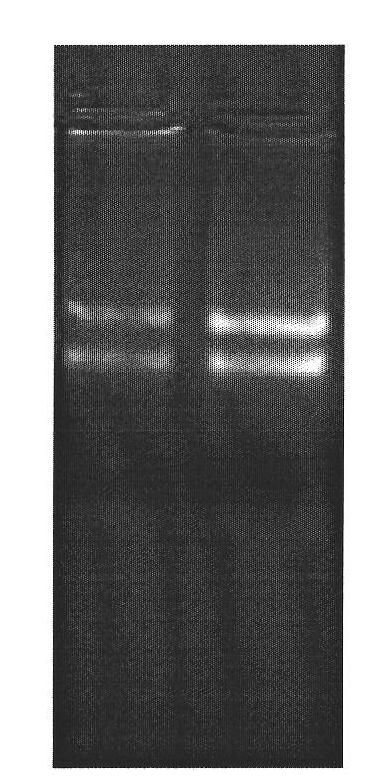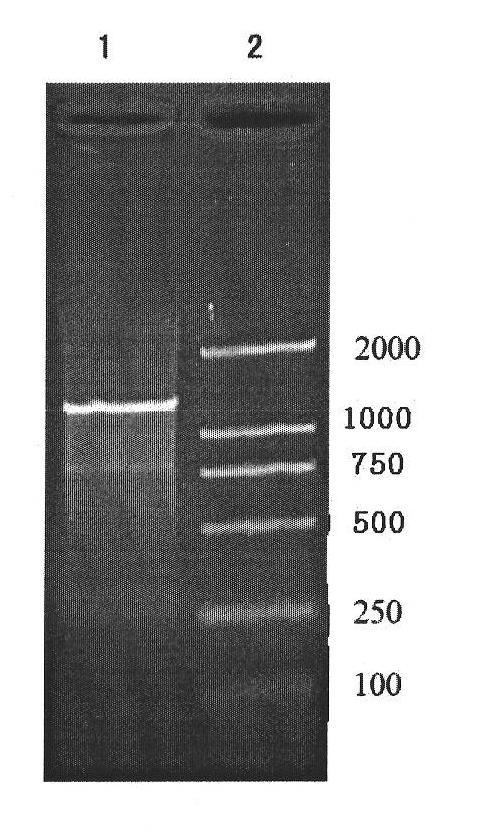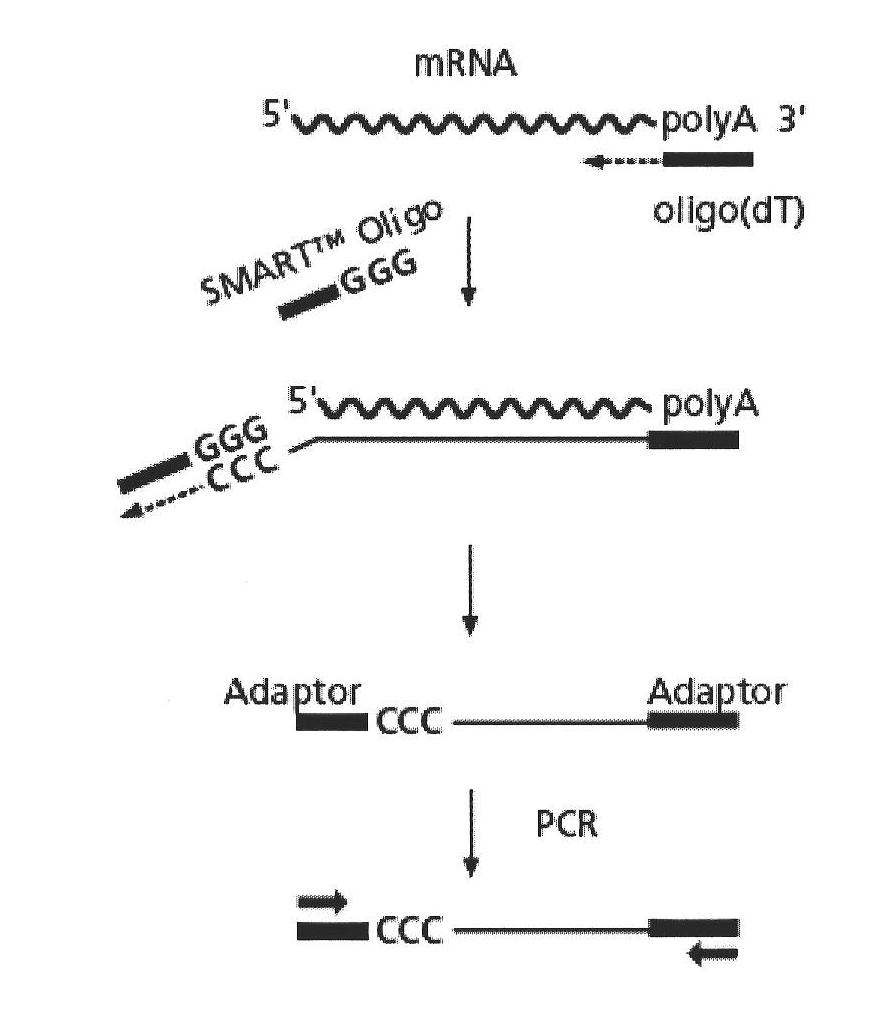Method for separation and identification of odorant binding protein (OBP) genes in insect's antenna
A technology of tentacles and genes, applied in the field of pest biological control, can solve problems such as environmental damage, cotton bollworm resistance, pollution, etc., and achieve the effects of improving efficiency, easy operation, and low cost
- Summary
- Abstract
- Description
- Claims
- Application Information
AI Technical Summary
Problems solved by technology
Method used
Image
Examples
Embodiment 1
[0050] Example 1: Extraction of antennal RNA, synthesis of first-strand cDNA by reverse transcription and synthesis of ds cDNA by LD-PCR
[0051] Get 200 pairs of antennae of Lygus alfalfa that just emerged, utilize the Trizol method to carry out the extraction of RNA, electrophoresis detects RNA quality (see figure 1 ), while the concentration of RNA measured by spectrophotometer was 618.8ng / μl. The first-strand cDNA and ds cDNA were synthesized by SMART technology and LD-PCR method. Finally, 1.5% agarose gel electrophoresis was used to detect the distribution of LD-PCR products. The principle of SMART is as follows figure 2 . The electrophoresis of LD-PCR products is shown in image 3 . The analysis results showed that the size of LD-PCR products ranged from 200bp to 2000bp, and the distribution range was relatively wide, indicating that the products included mRNAs of different genes, and there were several brighter bands, representing genes with relatively high expres...
Embodiment 2
[0052] Example 2: Digestion of ds cDNA by Sfi I and separation of ds cDNA by CHROMA SPIN-400 column
[0053] In order to connect the ds cDNA amplified by LD-PCR with the pDNR-LIB vector (commercially purchased), the ds cDNA was digested with Sfi I endonuclease, and the ds cDNA was separated by size using a CHROMASPIN-400 column , respectively packed in 16 sterile centrifuge tubes, one drop per tube. Finally, the size distribution of ds cDNA fragments detected by 1.5% agarose electrophoresis, such as Figure 4 , and finally according to the electrophoresis results, the ds cDNA and pDNR-LIB vector in tubes 7, 8, 9, and 10 were ligated.
Embodiment 3
[0054] Example 3: Electrotransformation of DH5α Escherichia coli cells with recombinant plasmids
[0055] In order to obtain higher conversion efficiency, electric conversion is used. The electroporation instrument is a product of Bio-Rad Company, and the electric shock parameters are set to 2000V, 200Ω. The electric shock time is 2-3 seconds.
PUM
 Login to View More
Login to View More Abstract
Description
Claims
Application Information
 Login to View More
Login to View More - R&D
- Intellectual Property
- Life Sciences
- Materials
- Tech Scout
- Unparalleled Data Quality
- Higher Quality Content
- 60% Fewer Hallucinations
Browse by: Latest US Patents, China's latest patents, Technical Efficacy Thesaurus, Application Domain, Technology Topic, Popular Technical Reports.
© 2025 PatSnap. All rights reserved.Legal|Privacy policy|Modern Slavery Act Transparency Statement|Sitemap|About US| Contact US: help@patsnap.com



